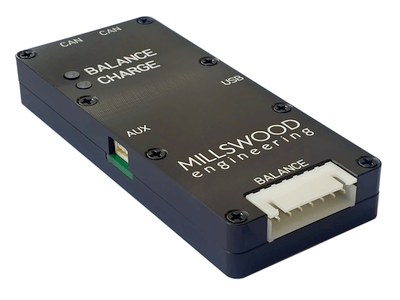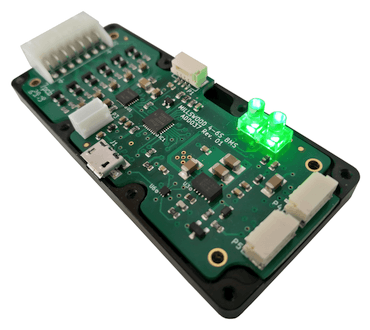On this page: Usage | Product resources
6S Battery Cell Monitor & Balancer

6S Battery Cell Monitor & Balancer
The 6S Battery Cell Monitor & Balancer is a precision instrument that ensures that multi-cell batteries are maintained in an optimal state, improving system reliability and prolonging battery life.
The 6S Battery Cell Monitor & Balancer does exactly as its name suggests: it monitors cells within a battery, and it balances those cells if and when they require it. Comprehensive data detailing the battery’s internal state is sent via the CAN interface.
Features:- Transforms a "dumb" battery into a smart (self-balancing) battery.
- Supports multiple battery chemistries - LiPo, LiS and LiFe.
- NEW in version 3: Supports 4S, 5S and 6S batteries.
- Galvanically isolated CAN interface, allowing stacking (for series connected batteries).
- Battery temperature monitoring with suitable external sensor.
- User-friendly configuration software.
- Rich variety of balancing control options.
- Seamless integration with 250W PMU.
- Weight: 45g (1.6oz).
- Dimensions: 80.0 x 35.0 x 11.5mm
The 6S Battery Cell Monitor & Balancer is distributed in Europe by VISIONAIRtronics.
If you are located closer to Australia, you can choose to purchase from Millswood Engineering.
Usage

Inside the 6S Battery Balancer
The Battery Balancer plugs directly into the balance connector present on most Lithium-based batteries. In many cases, this is the only connection required. A pair of indicator lights on the front panel give a "go / no go" indication of the battery's state of balance and state of charge. More detailed battery information is available via the CAN bus.
The Battery Balancer can be used in two ways:
- As a hand-held battery verification tool, or
- Installed in a UAV, either with or without interfacing to the vehicle's CAN bus.
Installation into a UAV confers a number of operational advantages:
- Batteries do not need to be removed periodically to check for balance.
- Battery status is available instantly, either directly from the front-panel LEDs, or remotely from the telemetry data sent on the CAN bus.
- Batteries are maintained in a state of balance, improving flight-readiness.
Product resources
- Documentation:
- Product brief: a short summary of the key features and specifications.
- Product manual: detailed description of the Battery Balancer hardware - how to configure it, how to connect it up, electrical and mechanical specifications, LiPo reference data, etc.
- CAN protocol: describes what values the Battery Balancer can measure and transmit, what commands it can receive, and how this data is formatted.
- Software:
- Configuration utility: a Windows app for configuring the Battery Balancer and checking that it is all working correctly.
More resources are available here.